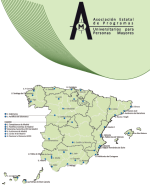Adapting user's interfaces for older adults. Alternative mechanisms to make its use easier and a practical case.
01/10/2006
30/09/2007
NAME OF THE PROJECT
Adapting user's interfaces for older adults. Alternative mechanisms to make its use easier and a practical case: Website 'Iconographic Program of San Ignacio de Loyola in the UPSA'.
CALL FROM
Name: Program of support to the teaching staff researches.
Resolution: Project evaluated by the ANEP
Institution: Pontifical University of Salamanca / Caja Duero
COORDINATING INSTITUTION
University: Pontifical University of Salamanca
Coordinator: Alberto Pedrero Esteban
DATES
01.10.2006 - 30.09.2007
PARTICIPATING ORGANIZATIONS
Pontifical University of Salamanca
University Program for Older Adults –University of Experience. UPSA
CONTENT
Brief Description
Given that not all older adults present the same difficulties, knowledge, skills or interests when it comes to using a computer, the interfaces will be personalized to adjust to the characteristics of every individual user and try to improve their experience with the computer. That way, parameters like the size of the letters or the size of the area where the user has to click will be modified according to the user's motor skills. The goal is to determine if these adaptations make it easier for them to use the computer for their tasks, as well as the way they influence the mental model that the users create about the system they are using.
Specific goals
1) Detect the problems faced by the people older than 60 years when accessing to the website of the Iconopraphic Program of San Ignacio de Loyola.
2) Define and set up non-intrusive mechanisms that will adapt the interface to the user's characteristics.
3) Analyze the improvements that adapting interfaces has brought and its impact on the mental model of the user.
4) Study the benefits that using a touch screen instead of a mouse can contribute to the process of interaction and the inclusion of voice fragments that would help the user identify the task to develop.
Summary of the Project
The user's behaviour, the usability of the systems and the adaptation of interfaces are aspects that have been studied in many different works. The theorical models to analyze the tasks have studied the user's interaction with an interface and the necessary knowledge to use it. However, these models have not studied the way changing the interface affects the user, if the user considers that this modification is positive, and if it affects the way that he or she develops the task. In this research
these aspects have been analyzed in a specific group, the older adults.
Taking as a reference a previous work that evaluated the usefulness of this adaptation for university students, that usefulness has been tested considering a group of 23 older adults, students of the University of Experience.
Adapting the presentation changes the way information is shown to the user. From a digital library of the 'Iconographic Program of San Ignacio de Loyola', the participants were asked to carry out a task divided in two parts. The first part had to be done using an interface that didn't have by default all the necessary information to develop the task; and the second part had to be done using an interface automatically adapted to the task. Another test wanted to study the advantages of using a touch screen instead of a mouse when trying to 'communicate' with the computer.
The main content of this work is made up of the goals of each test, the participants, the development of the tasks, the questionnaires, the analysis and the assesment of the results.
Given the results obtained in the tests we confirm that changing the interface does not affect the mental model that the user has of the application. There are no major differences regarding the percentage of correct answers when remembering the position of the elements before and after changing the interface.
It can also be confirmed, given the results of the tests, that including elements frequently used by the users to the interface, produces a reduction in the time used to develop the task. This objective parameter has been measured and verified. Conclusion: even though there could be a cognitive effort changing the interface; the time used to develop the task with an adapted interface is inferior than using a non-modified one.
Finally, using a touch screen can facilitate quite a lot the process of interacting with the computer, mainly with people with mobility problems or those who are just not used to using the mouse.
WEBSITE OF THE PROJECT
None.







